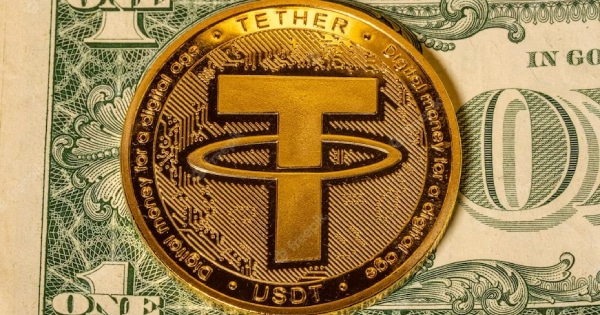All is not well in the world of crypto stablecoins. In February 2023, the New York Department of Financial Services regulator told stablecoin issuer Paxos to stop minting more of the BUSD stablecoin for Binance. [1] Last year, the hugely popular UST stablecoin from Terraform Labs and its founders Daniel Shin and Do Kwon depegged from its $1 value and caused a catastrophic chain of failures in the sector, including the eventual collapse of centralized exchange and hedge fund FTX/Alameda due to massive losses that were incurred. [2]
A stablecoin in crypto is one whose value is supposed to track an external fiat (government issued) currency such as the US dollar. The purpose of a stablecoin is because it defines the value of crypto purchases and payments in real world terms that we know of. While some crypto fanatics might already denominate their products and services in BTC, ETH, or some popular crypto, this is not widely accepted.
Most people still want to see the price in US dollars. That’s where stablecoins come in since the US dollar does not yet have a working Central Bank Digital Currency. So at the moment, the stablecoin is a proxy for a US dollar (or other currency like the EUR, JPY, and others).
Stablecoins maintain their peg in various ways, but the most common types are stablecoins that are backed by either US treasury notes, cash instruments, gold, and some high market value crypto like Bitcoin and Ethereum, or use an algorithm to mint or destroy something that is traded in the market to offset any loss or gain.
Normally the ratio in the basket of these instruments is adjusted to ensure that the collateral behind the stablecoin is more than enough to take care of any abnormal situations like a sudden increase in demand, or a sudden flood of that stablecoin into the markets. In other words, the stablecoin must be properly collateralized, or even overcollateralized by a wide margin to be safe.
The top stablecoins in the market at the moment are USDT by Tether, USDC by Circle, DAI by Maker DAO. In recent months, most of the major stablecoins have tried to clean up their act by publishing updated summaries of what is backing up their tokens. For Tether USDT for example, they publish their reserve collateral at https://tether.to/en/transparency/#reports. Dai publishes theirs at https://collateral.makerdao.com/. Tether has had suspicions in recent years, but several investigations have not really yielded anything suspicious.
Circle USDC is what is known as a fully-reserved stablecoin. Each USDC digital dollar is 100% backed by cash and short-dated U.S. treasuries, redeemable 1:1 on demand for U.S. dollars. According to their website, their reserves are custodied and managed by leading U.S. financial institutions like BlackRock and BNY Mellon.
The UST, and new stablecoins being planned by crypto chains Cardano and NEAR are what are known as algorithmic stablecoins. Algorithmic stablecoins are controversial particularly because UST depegged disastrously from the one dollar target.
The way algorithmic stablecoins work is not by backing these to real world US dollar equivalents like treasury notes. Instead an algorithmic stablecoin works much like a driver trying to maintain a constant speed who adjusts the gas to either increase or decrease. Except in the case of stablecoins, it’s not the gas that you increase when the speed slows down, it’s the amount of another crypto that acts as collateral.
Unfortunately in the case of UST, and more recently with another stablecoin called USN, it did not work. The collateral crypto can be traded in an exchange and converted. But it’s basically giving you something else if the stablecoin doesn’t work up to par, and returning that other token if in case the stablecoin rises in value. Sort of like a self correcting mechanism.
Except it doesn’t seem to work when there are sudden large changes in the quantity of the stablecoin. In the case of UST, even if it managed to recover from the initial depegging, the sudden loss of trust resulted in people dumping it into the market. Hence this resulted in the auto generation of more of the collateral crypto, which shot up to extremely high levels that resulted in an oversupply. Hence the whole thing crashed, both stablecoin and collateral.
As you know with the law of supply and demand, if there is an oversupply of an item that far outstrips the demand, the price crashes. The reason that gold is a desired way to back up a currency, the property that makes it precious, is scarcity. Although gold supply increases because it is being mined, the new supply of gold is not enough to satisfy its demand for jewelry, for gold bar stores of wealth, and for industrial uses.
Stablecoins are critical for the growth and stability of the crypto sector. If global governments kill it, they can kill or shrink the crypto sector, or just move people to use the actual tokens like Bitcoin and Ethereum directly for payments. However, very few people for now are willing to sell their houses or cars for crypto if they can’t convert it into cold hard cash.
The stablecoin is the means to popularizing crypto and blockchain, but it is also a key weakness that can undermine it.
SOURCES:
[1] Various sources including https://finance.yahoo.com/news/paxos-stop-minting-stablecoin-busd-112629527.html
[2] Various sources including https://www.coindesk.com/policy/2023/02/16/sec-set-to-sue-terraform-labs-do-kwon-for-misleading-investors-on-terrausd-stablecoin-bloomberg/

